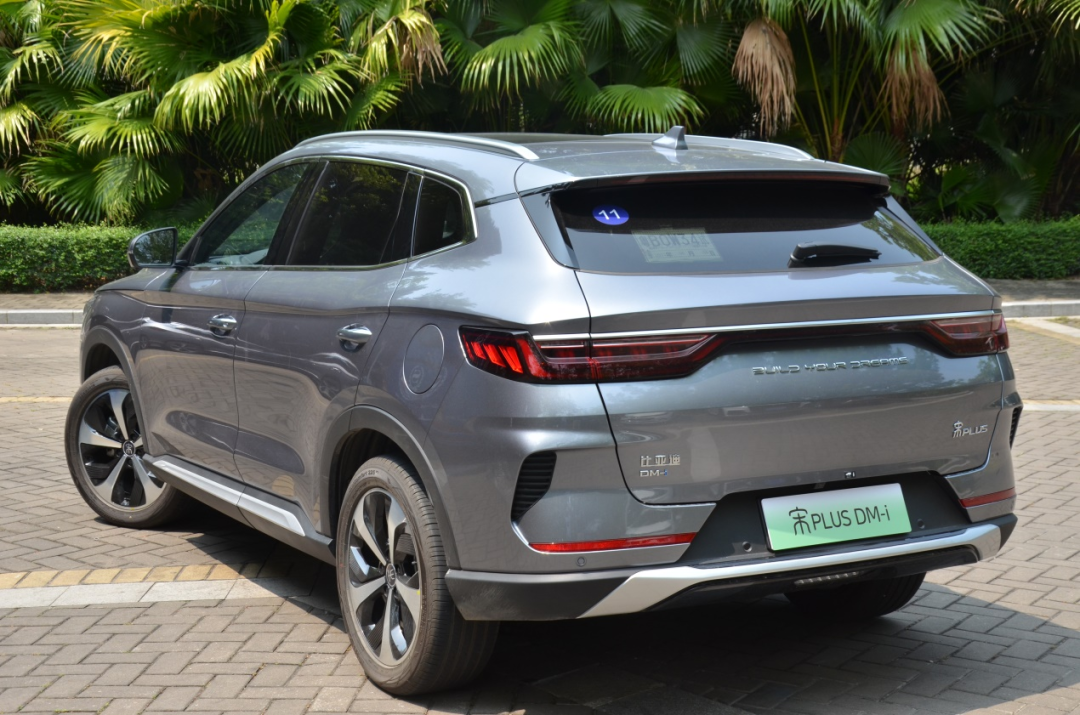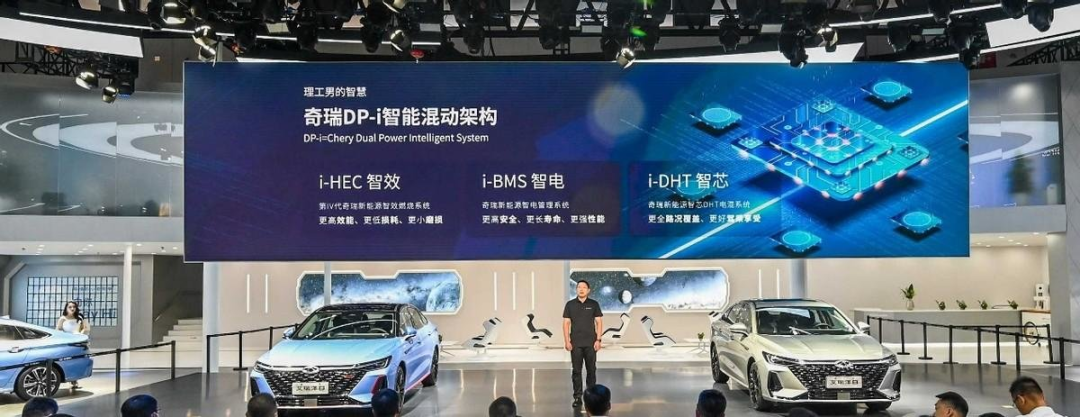Translation
| Title | Naming is difficult when dimension is exceeded |
|---|---|
| Everyone says that technology is based on changing names, but I absolutely disagree–just change the name. |
Naming is the first driving force of today’s high-tech industry. We have talked about the naming of electric vehicle batteries before (“The Hardest Part of Making Batteries is Naming Them”), which fully demonstrates the profoundness of the Chinese language, from image naming to the extension of imagery.
In terms of the qualifications for naming, when hybrid technology was first introduced into the market, pure electric vehicles had not yet been born. Unlike battery naming, hybrid technology is almost dominated by English abbreviations, some of which are mixed with various fashionable elements such as “-“, “·”, “:”, and mixed case letters.
If the naming method is like gibberish, it’s fine. The hybrid technologies of old automakers have undergone iteration and often have more than one name; hybrid technologies have names, and hybrid models have another code; plug-in and non-plug-in models sometimes even have their own names. In the current wave of hybrid models by Chinese domestic brands, the same technology can be used for different sub-brands and may even derive new names.
Even though the website can generate super-complex, irregular passwords that can be memorized at a glance, you will not necessarily be able to figure out the technical names or model names of various hybrid elites.
It’s difficult to name when the dimension is exceeded
After looking at almost all the hybrid models on the market, we can tentatively divide all the common suffixes after the model names into three to four components:
Firstly, the exclusive name for hybrid technology, which every brand will give its own name, such as BYD DM-i, Honda i-MMD, Great Wall Lemon Hybrid DHT, Changan iDD, etc. However, technical names do not necessarily appear in the model name. BYD DM-i is a good example, while Honda and Great Wall did not incorporate “i-MMD” and “Lemon” into the model names.
 The second is hybrid technology routes, such as extended-range electric vehicles and DHT. When DHT hybrid technology became popular, many hybrid technologies with the word “DHT” in the name became available, such as Great Wall’s Lemon Hybrid DHT and Chery’s Kunpeng DHT. Great Wall uses DHT in the names of cars that use this technology, while Chery only uses “Kunpeng” as a suffix.
The second is hybrid technology routes, such as extended-range electric vehicles and DHT. When DHT hybrid technology became popular, many hybrid technologies with the word “DHT” in the name became available, such as Great Wall’s Lemon Hybrid DHT and Chery’s Kunpeng DHT. Great Wall uses DHT in the names of cars that use this technology, while Chery only uses “Kunpeng” as a suffix.
Many car manufacturers choose to omit this information, such as Toyota’s THS, Honda’s i-MMD, and BYD’s DM-i, all of which belong to the DHT type of hybrid system but do not explicitly state the type, emphasizing the uniqueness of their own technology.

The third is the type of hybrid car model, that is, whether the vehicle is an HEV or PHEV. For models that offer multiple power sources, this differentiation is important. For example, all hybrid vehicles under Great Wall use Lemon Hybrid DHT as the core technology, but they are divided into HEV and PHEV models, which are distinguished by the suffix “DHT” and “DHT-PHEV.”
Of course, car manufacturers have a natural instinct to come up with their own original names, and many do not use HEV/PHEV directly. Toyota distinguishes the plug-in hybrid version by adding “E+” to the “Dual Engine” suffix, and Honda has recently adjusted its naming system, using “e:HEV” and “e:PHEV” to distinguish, although it includes a weird colon, it is actually more intuitive than the previous “Sharp Hybrid e+”.
 BYD and some new car manufacturers have completely abandoned fuel vehicles (including HEVs), so there is no need to specifically distinguish hybrid types by naming. For example, BYD’s DM-i is actually equivalent to “DM-i PHEV”, and the extended-range version of the NETA S must also be a PHEV (in terms of policy), without the need to specify separately.
BYD and some new car manufacturers have completely abandoned fuel vehicles (including HEVs), so there is no need to specifically distinguish hybrid types by naming. For example, BYD’s DM-i is actually equivalent to “DM-i PHEV”, and the extended-range version of the NETA S must also be a PHEV (in terms of policy), without the need to specify separately.
The fourth aspect is some main performance and configuration features, such as the electric range of plug-in hybrid models, the displacement of the internal combustion engine, and whether it’s front-wheel drive or four-wheel drive, etc. These are similar to mainstream fuel vehicles or pure electric vehicles.
However, because there are more data dimensions for hybrid vehicles, some information-intensive terms like “1.5TD-DHT Pro 100km” may appear. “1.5TD” represents the internal combustion engine specifications, “DHT Pro” is the brand’s name for the three-speed DHT gearbox, the “-” between the two indicates a hybrid drive of the internal combustion engine and electric motor, and “100km” represents the pure electric driving range.

Due to various reasons and backgrounds, there are actually very few models that have all four parts. Most of them will omit one or more of them. Different car companies and models often have different combinations of suffixes, which may cause confusion for consumers who thought “DM-i” and “PHEV” were parallel technologies.
For example, Honda, which just updated their naming rules, omitted the technical name “i-MMD” (Honda never puts hybrid technology names in the car name), and also omitted that the technology belongs to the “DHT” hybrid line (in fact, the term “DHT” did not exist when i-MMD was developed).
Toyota has been in the field of hybrid for the longest time, so its naming conventions understandably feel somewhat like hasty patches to keep up with the times. “Hybrid Synergy Drive” represents HEV hybrid while PHEV is represented by “Hybrid Synergy Drive+”; meanwhile, GAC Toyota takes a different approach by using “High Performance” as a suffix for the Venza PHEV.
Therefore, a name like the GAC Toyota Venza High Performance version is either missing or unclear in terms of the four parts mentioned above. If we add in all the information, it could be: Venza, THS (Toyota Hybrid System technology name), DHT, PHEV, 2.5L xxx version.
Focus on Key Points
Each carmaker’s naming conventions for their hybrid models mostly reflect their own past development and current demands. The first three of the four suffixes mentioned above correspond to the brand feeling that highlights proprietary technology, distances from old hybrid and distinguishes between HEV and PHEV.
If the strategy is to cater to both the HEV and the PHEV markets, the naming must emphasize the differences as much as possible. If non-DHT types of PHEV models have been sold recently or in the past, it is preferable to indicate “DHT” or the name of the new proprietary technology in the naming for distinction. If a carmaker is particularly confident in its own technology or has genuine unique features, it is inclined to incorporate its own original name into the naming.
Weiping and Haval’s hybrid models differentiate clearly by using “DHT” and “DHT-PHEV” as identity labels, and the suffix “DHT” sets apart these next-generation hybrid models from the old single-motor hybrid technology in the previous versions. Therefore, GWM has even chosen not to emphasize the “Lemon Hybrid DHT” technology brand in the name of the car.
Initially, Geely hoped to have the “Thor Hi・X” as its technical label. But after HEV and PHEV models were launched, they found that Hi・X could be easily confused with HEV/PHEV. Soon they changed it to “Hi・F” (HEV) and “Hi・P” (PHEV). This naming solution is more intuitive than HEV/PHEV, and the consumers may not necessarily understand the F and P labels, which are differentiated from the technical name “Hi・X”.
BYD’s advantage is that they have stopped the sale of fuel cars, so they no longer need to specify HEV and PHEV. Also, because the old hybrid suffix name “DM” is well known, they just added “-i/p” to distinguish the new ones from the old ones. DM-i has also effectively completed the task of promoting the technology brand, and deliberately hiding the fact that “(DM-i also belongs to) DHT” has worked well.
As Japanese carmakers entered the hybrid market early, they didn’t need to consider the difference between hybrid and plug-in hybrid at that time. It indirectly caused some inadequacy in the old naming method today. In the past, PHEV has been a segment that car companies do not necessarily need to consider to reflect the identity in the car name. But as PHEV becomes more important, Toyota and Honda have also introduced plug-in hybrid models and had to patch up the original naming rules.
 Toyota has a famous dual engine brand, so much so that the abbreviation of its technology, THS, does not need to be revealed and Toyota does not need to emphasize it to ordinary consumers. For PHEV models, Toyota only hastily added a “E+” suffix, and even Guangzhou Toyota has two suffixes, “E+” and “high-performance version”, to represent PHEV.
Toyota has a famous dual engine brand, so much so that the abbreviation of its technology, THS, does not need to be revealed and Toyota does not need to emphasize it to ordinary consumers. For PHEV models, Toyota only hastily added a “E+” suffix, and even Guangzhou Toyota has two suffixes, “E+” and “high-performance version”, to represent PHEV.
On the surface, Honda is similar to Toyota, using “Sharp Hybrid” and “Sport Hybrid” as the naming of its hybrid technology in the HEV era to highlight its sportiness. However, in contrast to Toyota, the more famous name is i-MMD. Honda recently announced a new naming rule of “e: HEV” and “e: PHEV” that echoes pure electric “e: N”.
Different brands have chosen their own hybrid naming suffix “menu” based on different past development paths, different current communication needs, and different future development plans, which objectively further increases the difficulty for consumers to distinguish and remember.
In addition to these relatively normal and tedious names, there are also some purely duplicated names. They mainly come from the car companies’ spontaneous naming changes and different naming of the same technology by high-end and low-end brands under the same group. In addition to Great Wall using the same hybrid technology name for NIO and Haval, Geely and Lynk & Co., Chery and Xingtu have all used the same technology but with different names.
Lynk & Co.’s E-Motive is basically the same as Geely Lei Shi Hi-X, and EM-F/EM-P corresponds to Geely Hi-F/Hi-P; Chery’s earlier Kunpeng DHT was used by Xingtu and then became Xingtu ET-i hybrid technology. After Kunpeng DHT, Chery recently released a new hybrid brand, DP-i, which is essentially a coverage and extension of Kunpeng DHT.
It is difficult to say what kind of naming convention is the best. Different car companies choose their own emphasis based on various demands such as sales volume, voice, and tone, and then apply their own packaging methods. As a result, the names of various types of hybrid-related technologies on the market are disorderly, not only different from each other, but even in different ecological niches.
Referring to the combination of “technical name + technical type + hybrid classification + other data”, and identifying which parts are omitted and what the surface name really means, it may be possible to translate the long string of garbled suffix letters into their respective meanings.
Therefore, names are like little girls dressed up by others, and what they are called is not important at all. What is important is what they represent behind their names.
This article is a translation by ChatGPT of a Chinese report from 42HOW. If you have any questions about it, please email bd@42how.com.